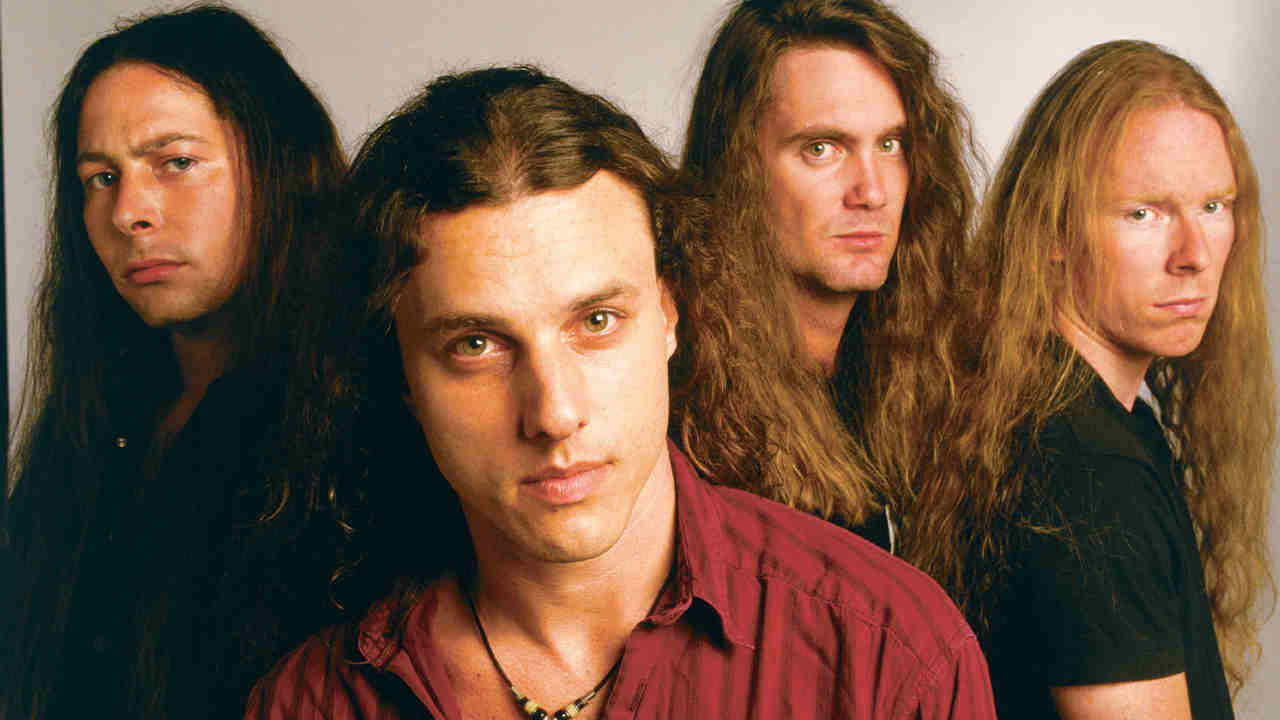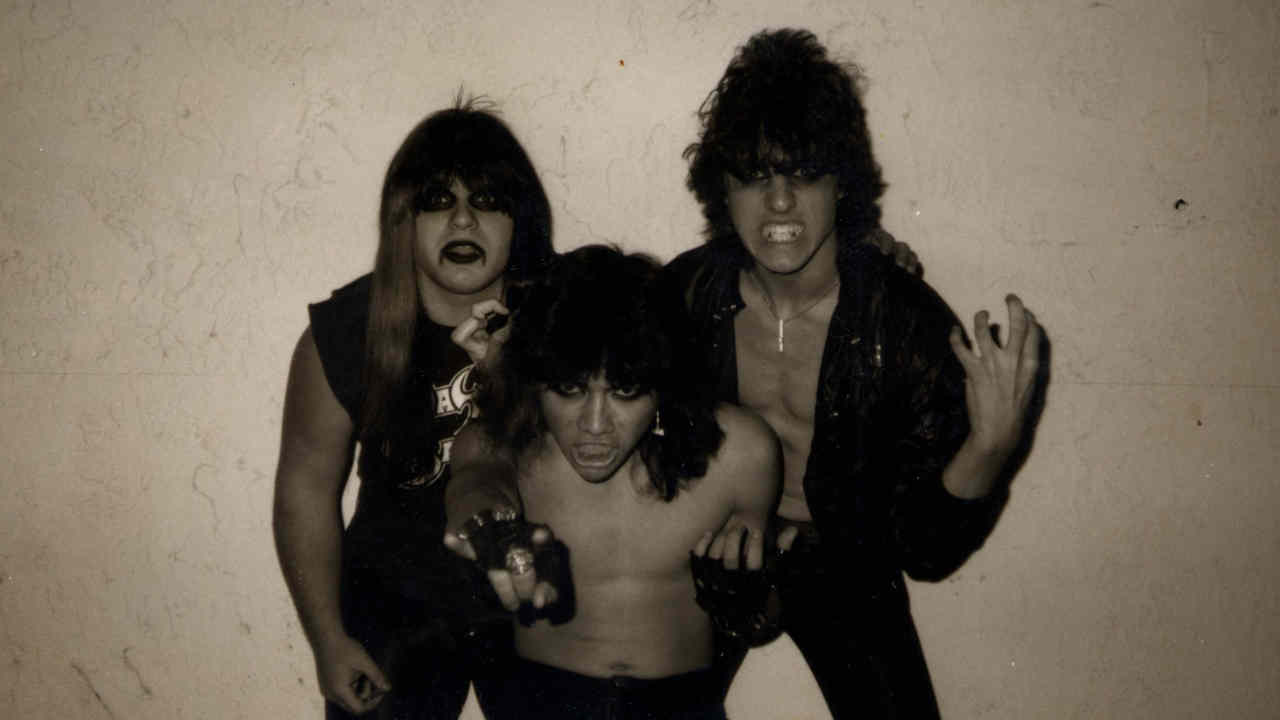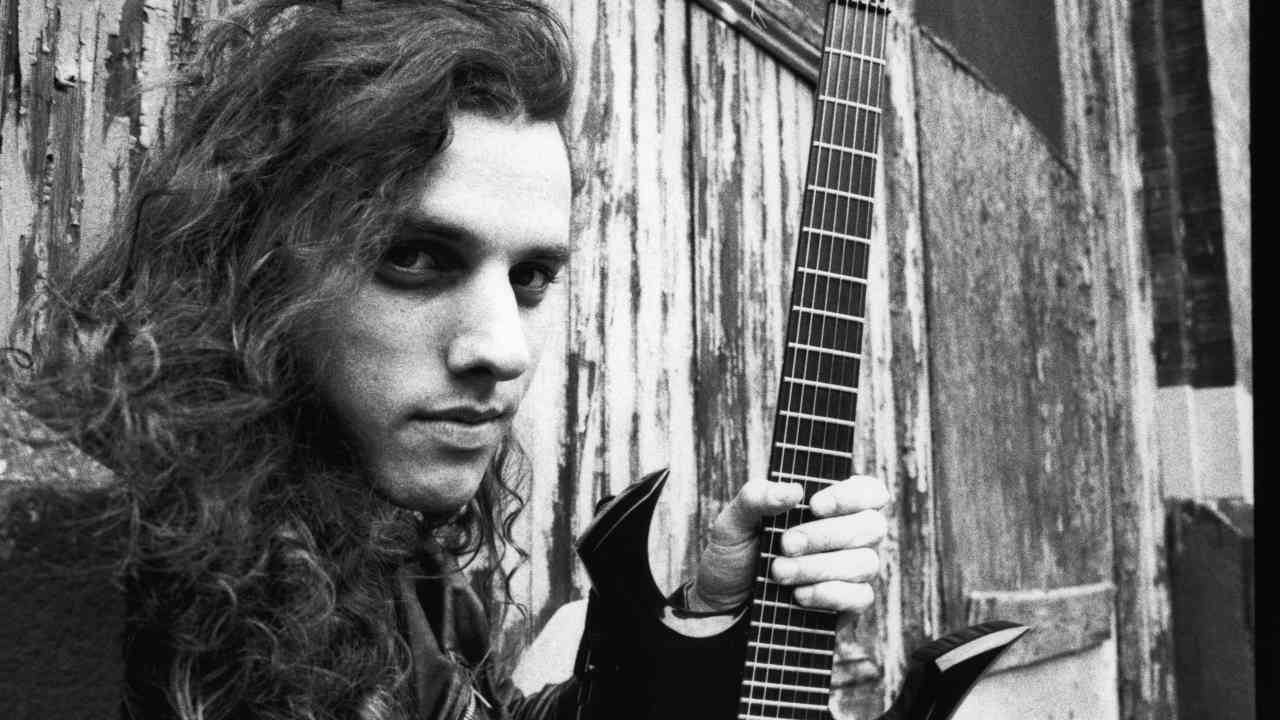
December 13, 2001. The day dawns grey – and it’s about to turn black. The news breaks that Chuck Schuldiner, one of the most crucial musicians ever to inhabit the swamps of death metal, has died from a brain tumour at the age of 34.
Schuldiner’s former band, Death, were pioneers of the death metal scene, and linchpins of metal’s underground. But even after he steered the band away from their twisted, provocative beginnings into more technical and progressive areas, they never achieved the mainstream breakthrough they deserved.
Death began life in Florida in 1983 under the name Mantas, well before there was anything even approaching a death metal scene. The original line-up featured the 16-year-old Chuck – calling himself ‘Evil Chuck’ – on guitar, plus singer/drummer Kam Lee and bassist Rick Rozz. The trio began to write and record demos, circulating them through the tape trading network. The 1984 tape Death By Metal would be an early landmark in the developing death metal scene.
“I love the New Wave Of British Heavy Metal, bands like Maiden and Saxon,” Chuck later said. “But I wanted to combine their style with the harder end; with what Slayer and Venom were doing. I didn’t set out to create something new – it just happened.”
By the end of 1984, Mantas had changed their name to Death. The demo Reign Of Terror followed, along with several live tapes. But in a taste of what was to come, the line-up was thrown into chaos when Schuldiner parted ways with Lee and Rozz. He brought in bassist Scott Carlson and guitarist Matt Olivio from local proto-grindcore band Repulsion. Finding a drummer was harder.

“There were loads of people in the local area up for it, and I could have settled for someone who was OK, but not brilliant. That wasn’t what I wanted,” Schuldiner recalled in the early 90s. “To make Death as good as I believed we could be, I had to have a line-up that kicked ass on all fronts. I even briefly moved to San Francisco in the search of the right man, but that didn’t pan out.”
Frustrated, and now a little desperate, Schuldiner returned to Florida. And feeling that perhaps he was never destined to get his project off the ground, he accepted the offer to join another band, Canadian thrashers Slaughter. “It was a mistake, but I didn’t know it at the time,” he recalled. “Now, I’m not knocking them, but they weren’t right for me. So, after two weeks, I went back home to Florida.”
Not that he was there long either. With a renewed focus, Schuldiner went back to San Francisco, and this time found drummer, Chris Reifert. Just why the pair had never met before remains a mystery. But things were really starting to accelerate. The duo recorded the Mutilation demo, and got a record deal with the growing Combat label.
It was this two-man line-up that recorded Death’s landmark 1987 debut album Scream Bloody Gore. Schuldiner played everything, apart from the drums, and the style of the album crystallised the entire concept of death metal. It took the thrash template and intensified it, adding guttural vocals, a style that few outside the tape trading network would have been familiar with. Scream Bloody Gore remains a work of warped brilliance.
“Did we set out to do something that was so unusual? No,” admitted Schuldiner, a couple of years later. “This was very much my concept, which may have helped. Apart from Chris, it was a one-man show. And when you’re virtually working on your own, it can sharpen the vision.”
Typically, Schuldiner then changed everything once again. He moved back to Florida once more, left Reifert behind (he would later form cult death metal favourites Autopsy) and teamed up once more with Rozz, by this time in Massacre. Rather than recruit and entirely new band, Schuldiner enlisted the other members of Massacre, namely bassist Terry Butler and drummer Bill Andrews.
It was this line-up that recorded Death’s second album, 1988’s Leprosy, a recorded that benefitted from being more of a band effort than its Schuldiner-driven predecessor. Death were also starting to get noticed outside of the death metal underground, even if they were greeted with derision by the mainstream metal press. But Scream Bloody Gore and Leprosy established them as one of the figureheads of a new movement that would soon supplant thrash as the benchmark for extremity in metal.
Typically, Death’s rising profile was marked by instability. Schuldiner’s revolving-door approach saw Death part ways with Rozz after a 1989 European tour. By the time the band recorded 1990’s Spiritual Healing, James Murphy was second guitarist (the latter would also play with Obituary and Testament).
By the time of Spiritual Healing, Schuldiner had tired of the gratuitous gorehound lyrical approach of the early days and turned his attention to more socially aware lyrics that centred around religious fakery, drug addiction and serial killers.
"I got fed up with writing about crap monsters,” he said in the early 90s. “What’s horrific about that sort of thing? The real evil in this world goes on in society. I’d just reached a time in my life as a person and as a musician when I felt angry enough to write about it.”

His vision for Death may have evolved, but things within the band were as combustible as ever. In 1990, Schuldiner turned down the chance to tour Europe, in the belief that things weren’t organised well enough. Amazingly, Butler and Andrews decided to go ahead without him anyway, bringing guitarist Walter Traschler and vocalist Louie Carrisalez (the latter actually Death’s drum roadie). Schuldiner was not amused, taking legal action against Butler and Andrews.
That was the final straw for the frontman. Rather than try and recruit a permanent band, he opted to use a revolving cast of session musicians for albums and tours. For 1991’s Human, he enlisted Cynic guitarist Paul Masvidal (who been Death‘s touring guitarist) and drummer Sean Reinert, together with Sadus bassist Steve DiGiorgio.
Human would be a turning point for Chuck Schuldiner. 1993’s Individual Thought Patterns, 1995’s Symbolic and 1998’s The Sound Of Perseverance (each featuring a different line-up, naturally) found the frontman moving away from the extreme metal genre he helped create towards a sound that was increasingly technical and progressive. Those albums are acclaimed today, but they baffled the more entrenched sections of the death metal scene. Schuldiner himself had pre-empted the reaction in the early 90s.
“Death is not a limited band where I want the same, simple beat through everything,” he railed. “I’m inspired by a lot of bands that aren’t death metal. I’ve got influences that come from different types of music, different types of metal. To say being technical isn’t allowed in this type of band, I just think that’s a narrow-minded statement. It’s coming from someone who doesn’t understand my direction. They don’t have to like it. But if you really wanna get into the reasoning of it, Death isn’t a band that I want to limit.”
By the time of The Sound Of Perseverance, Schuldiner was openly talking about folding Death and starting a new band. He delivered on that promise in1998, when he put Death on ice and Control Denied. Released in late 1999, the latter’s debut album, The Fragile Art of Existence, leaned fully into progressive metal. But that wasn’t the biggest change. Schuldiner had stepped back from singing duties to focus on playing guitar, instead enlisting vocalist Tim Aymar. who adopted a cleaner, more operatic singing style than Chuck. The latter insisted he made the decision to step back partly to put clear water between his old and new bands, and partly because of his dissatisfaction with his old singing style.
Control Denied toured in support of The Fragile Art of Existence, but then tragedy struck when Schuldiner was diagnosed with a brain tumour. Sadly, he passed away in 2001, leaving an incredible legacy – one that has never truly received the respect it deserves outside of death metal circles.
Like so many people before him who were single-minded in their pursuit of excellence, Schuldiner burnt out others at an incredible rate. “I can’t believe this band has lasted so long,” Schuldiner said in 1998 “Maybe the reason we’ve been going for so long is that I still haven’t made the ultimate record. But I’m proud of everything we’ve done along the way. Will we ever get there? I dunno. I doubt that I shall ever be completely happy.”
Originally published in Metal Hammer Presents: The Devil’s Music







